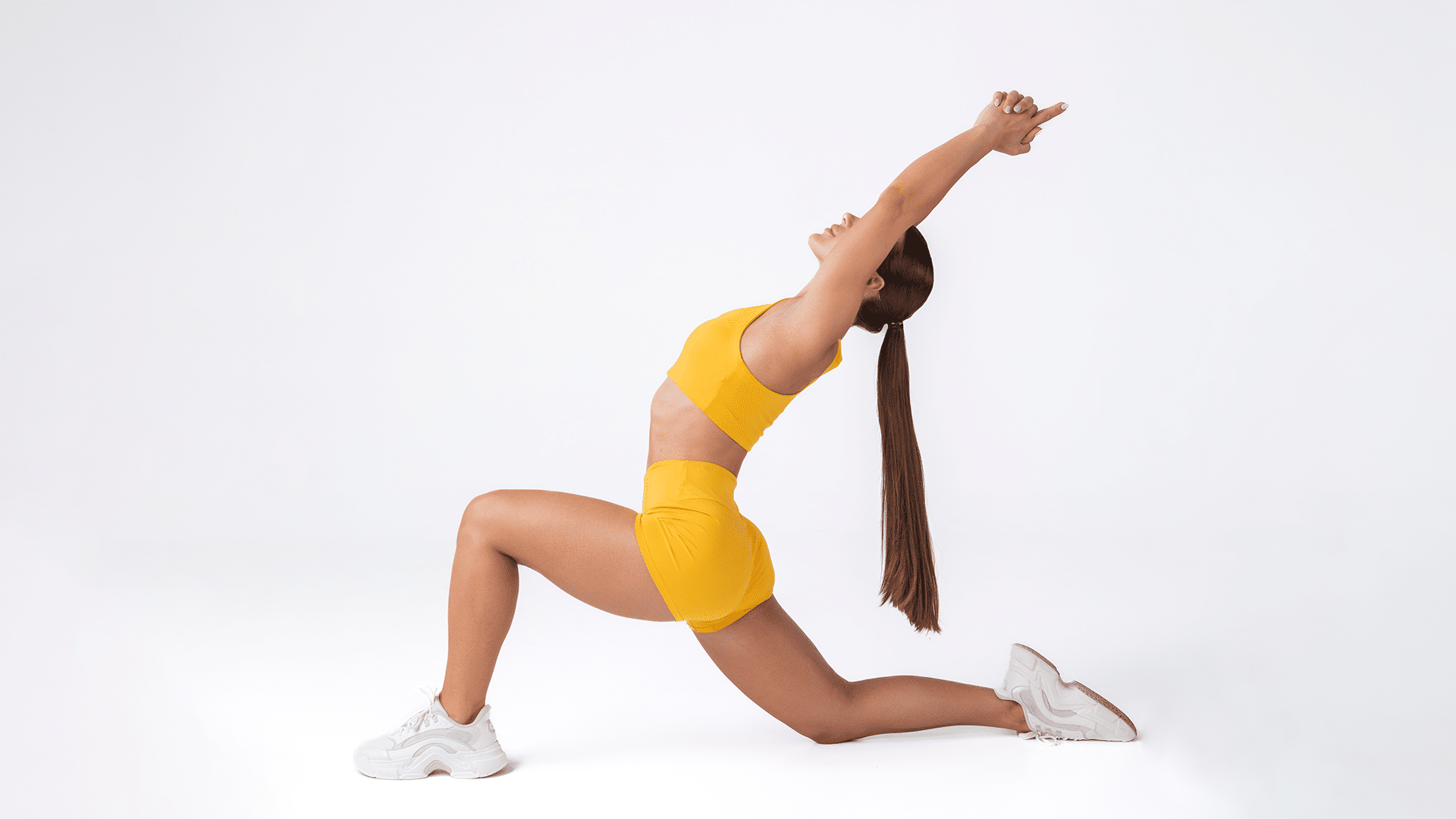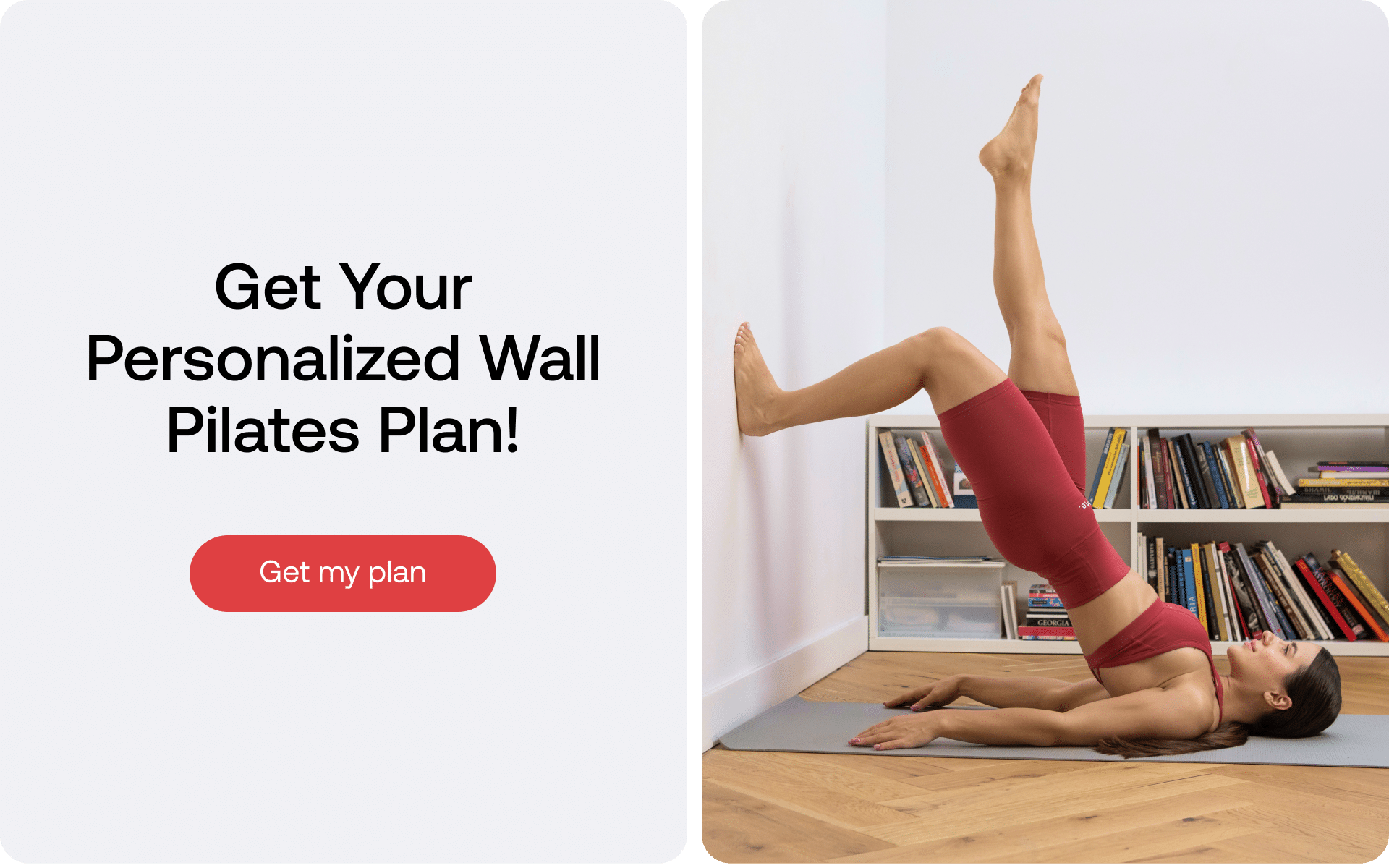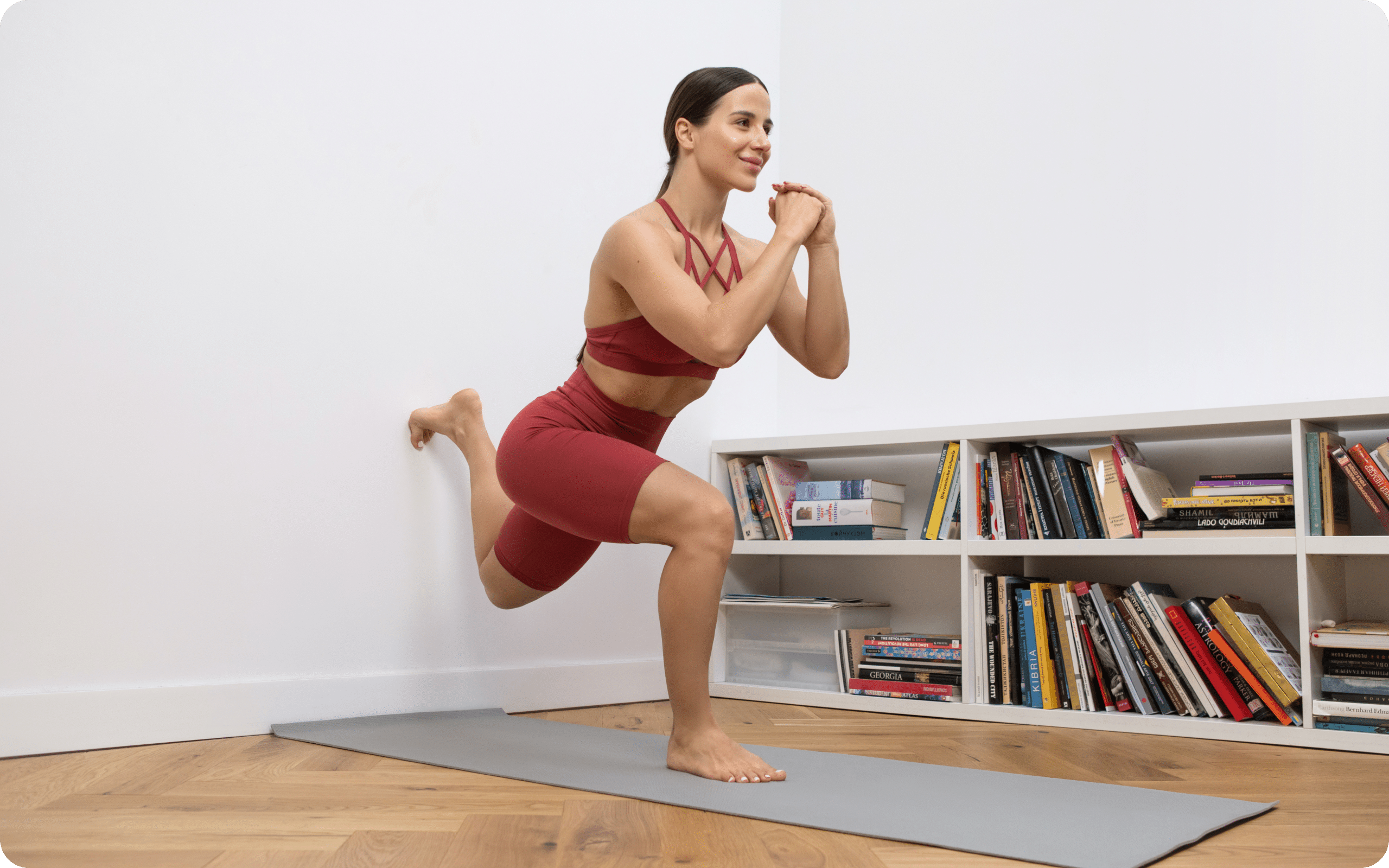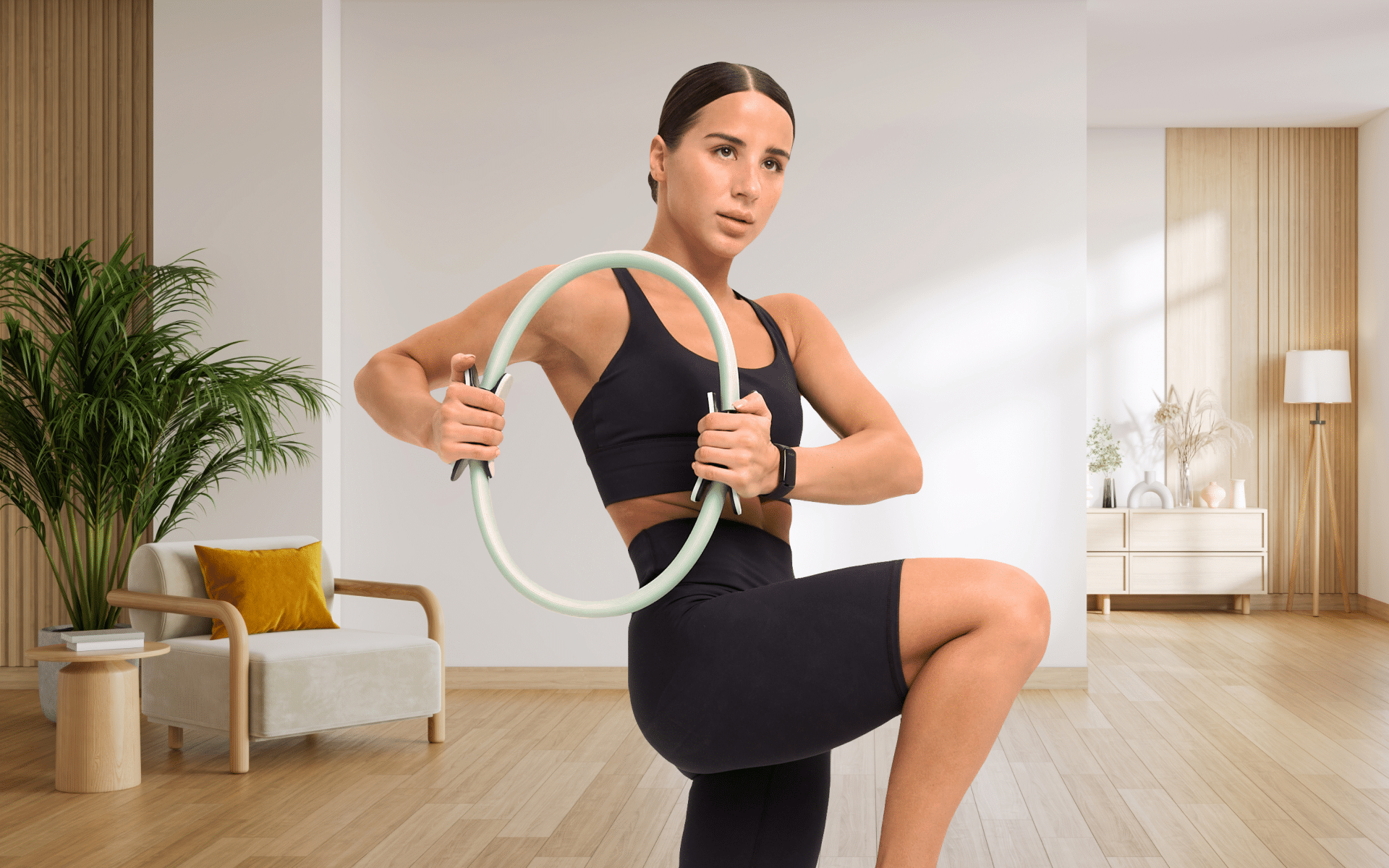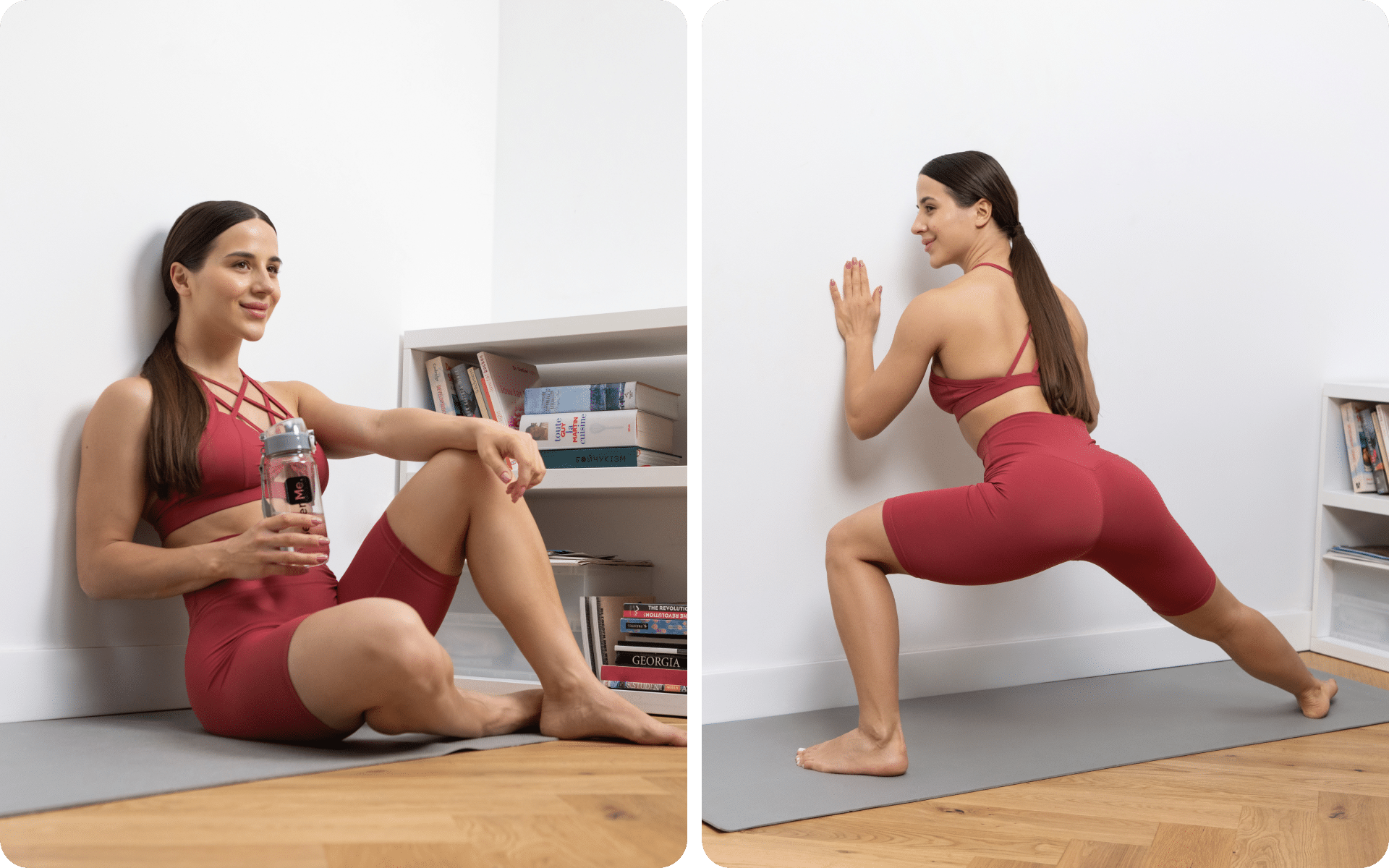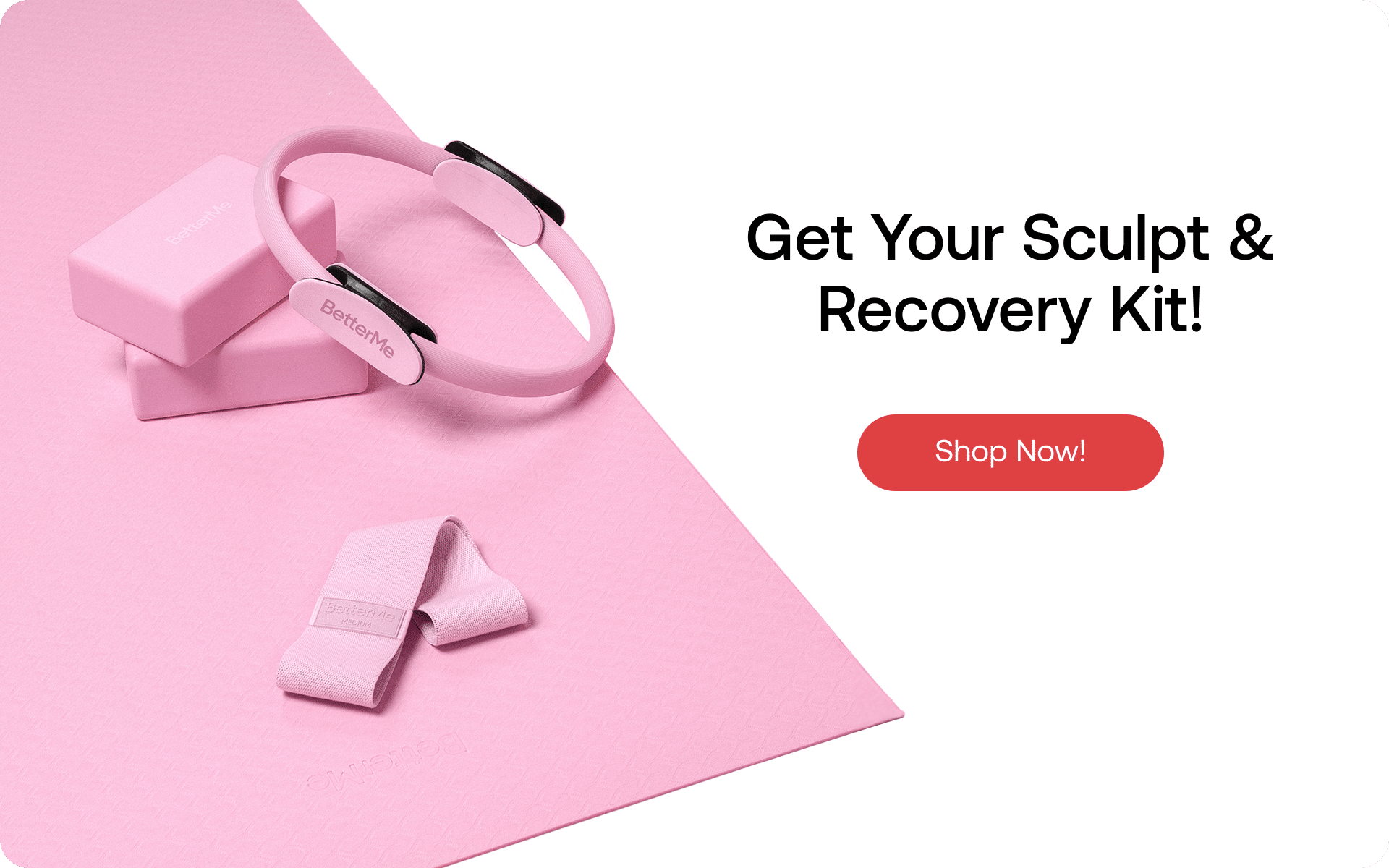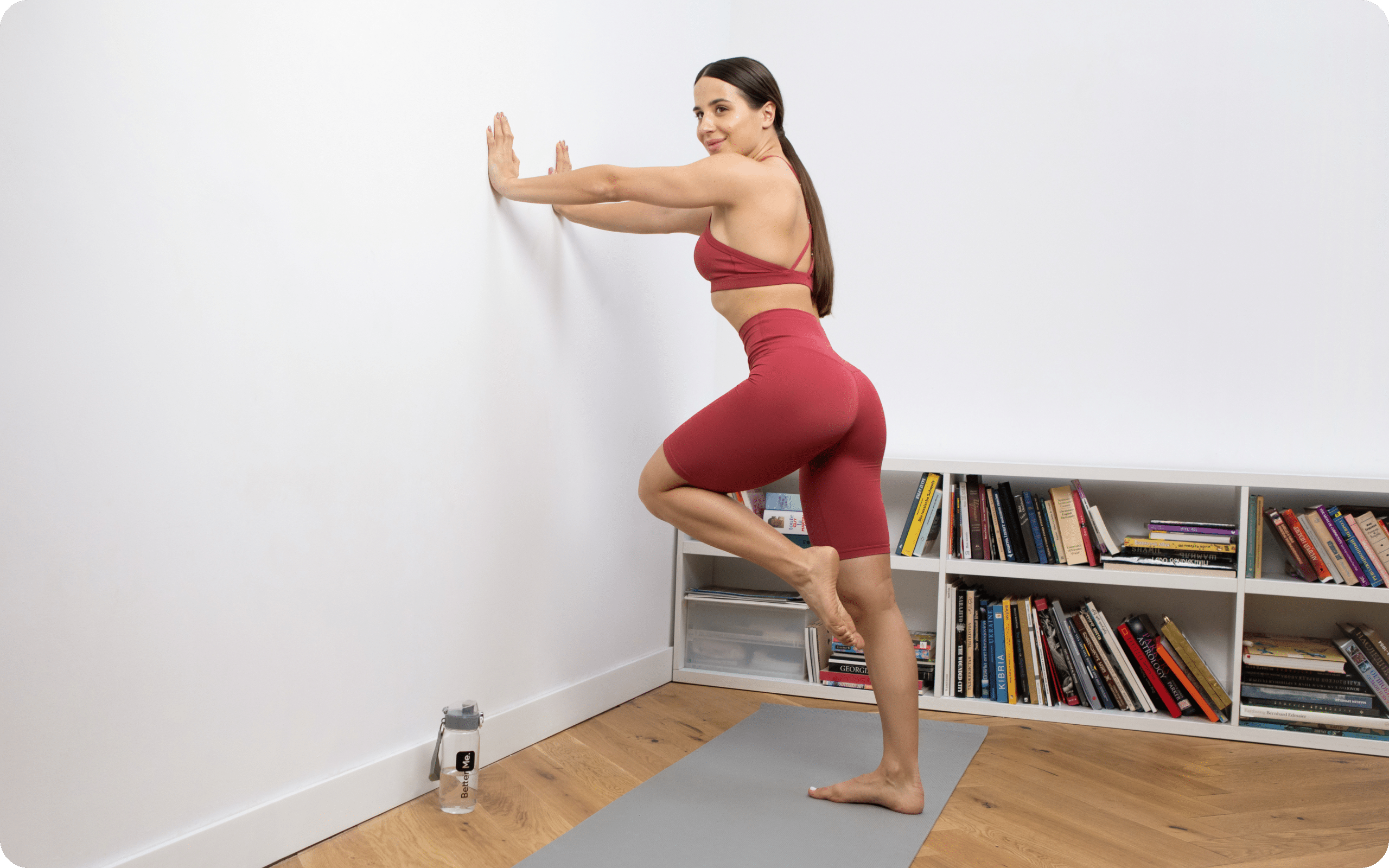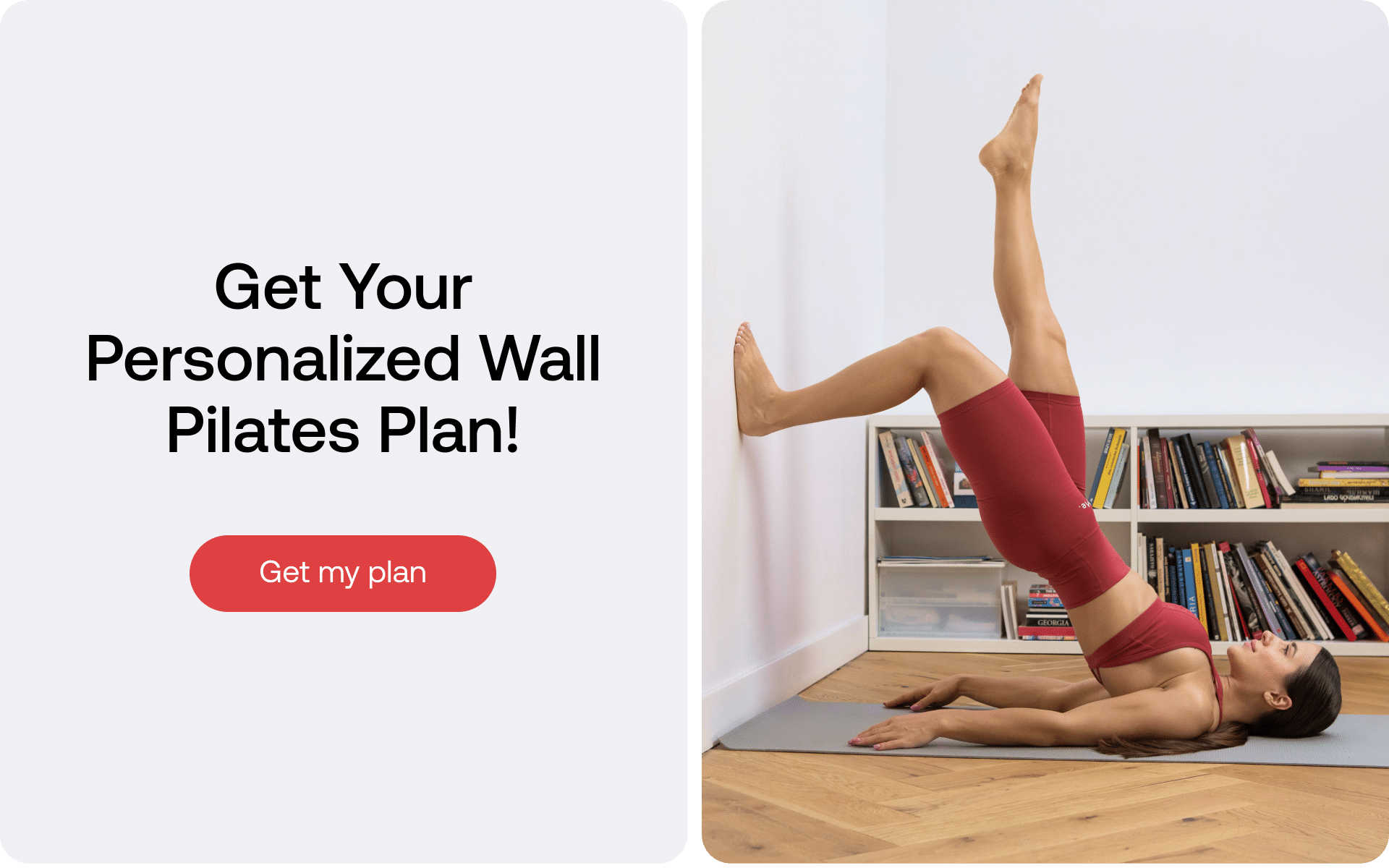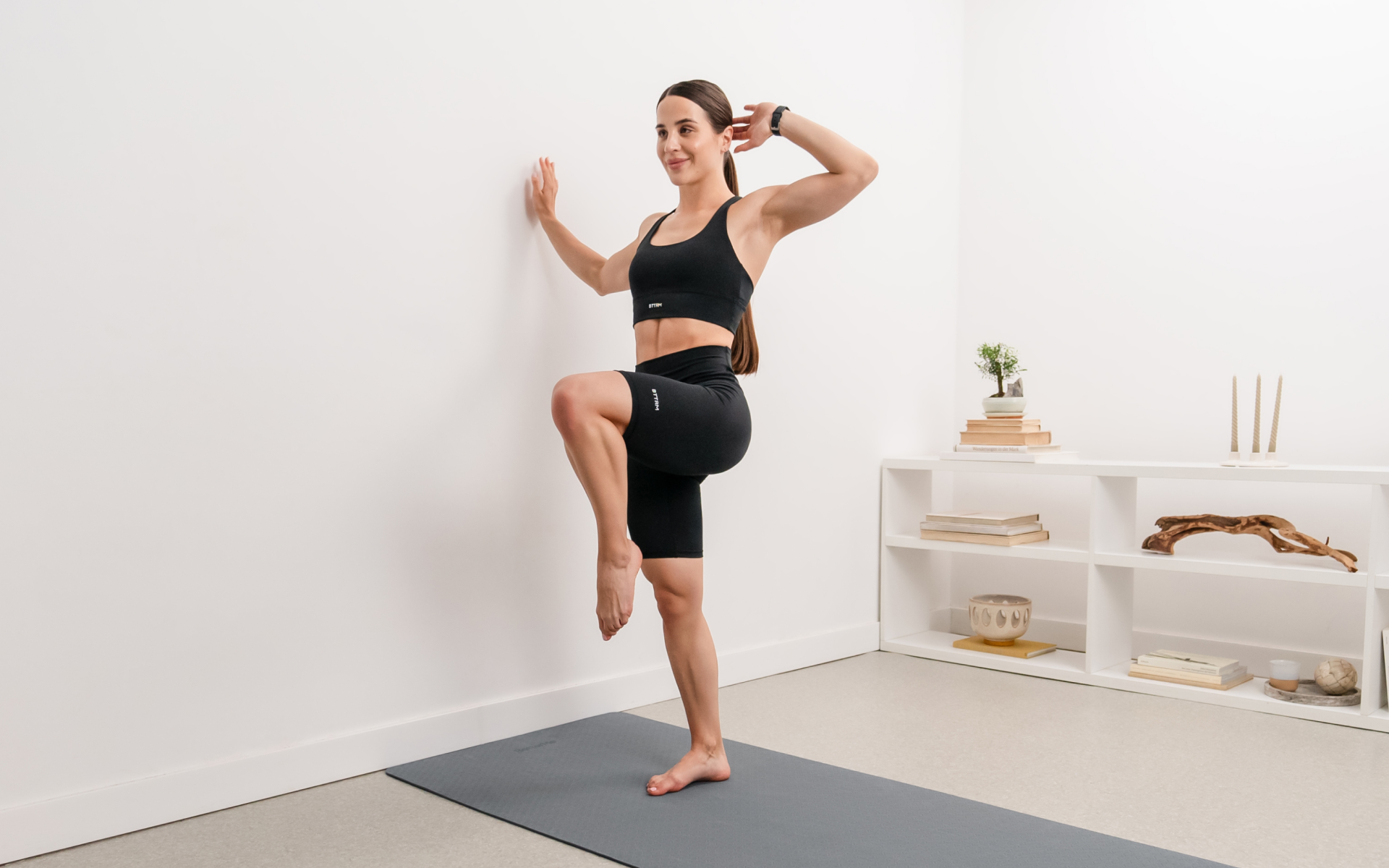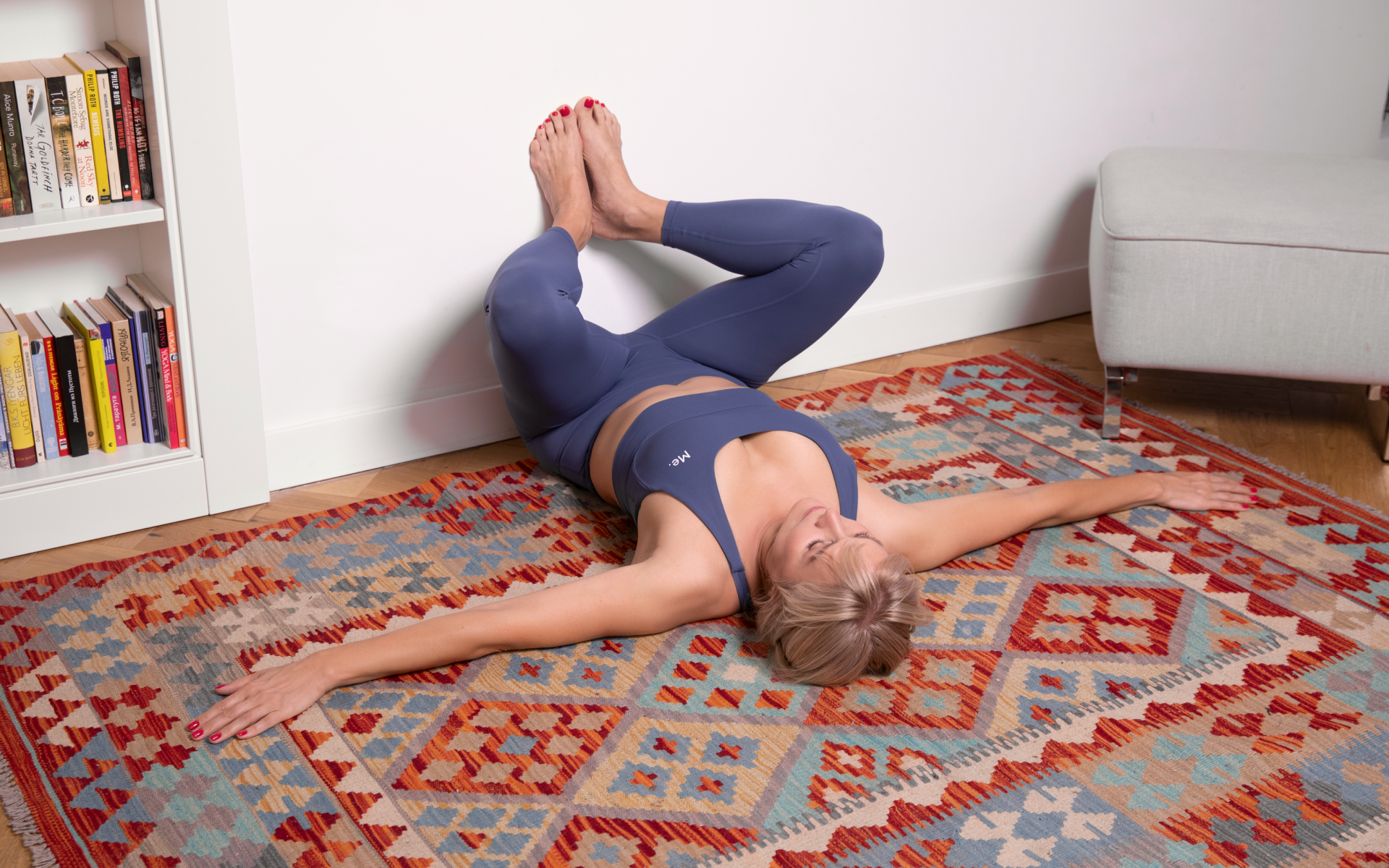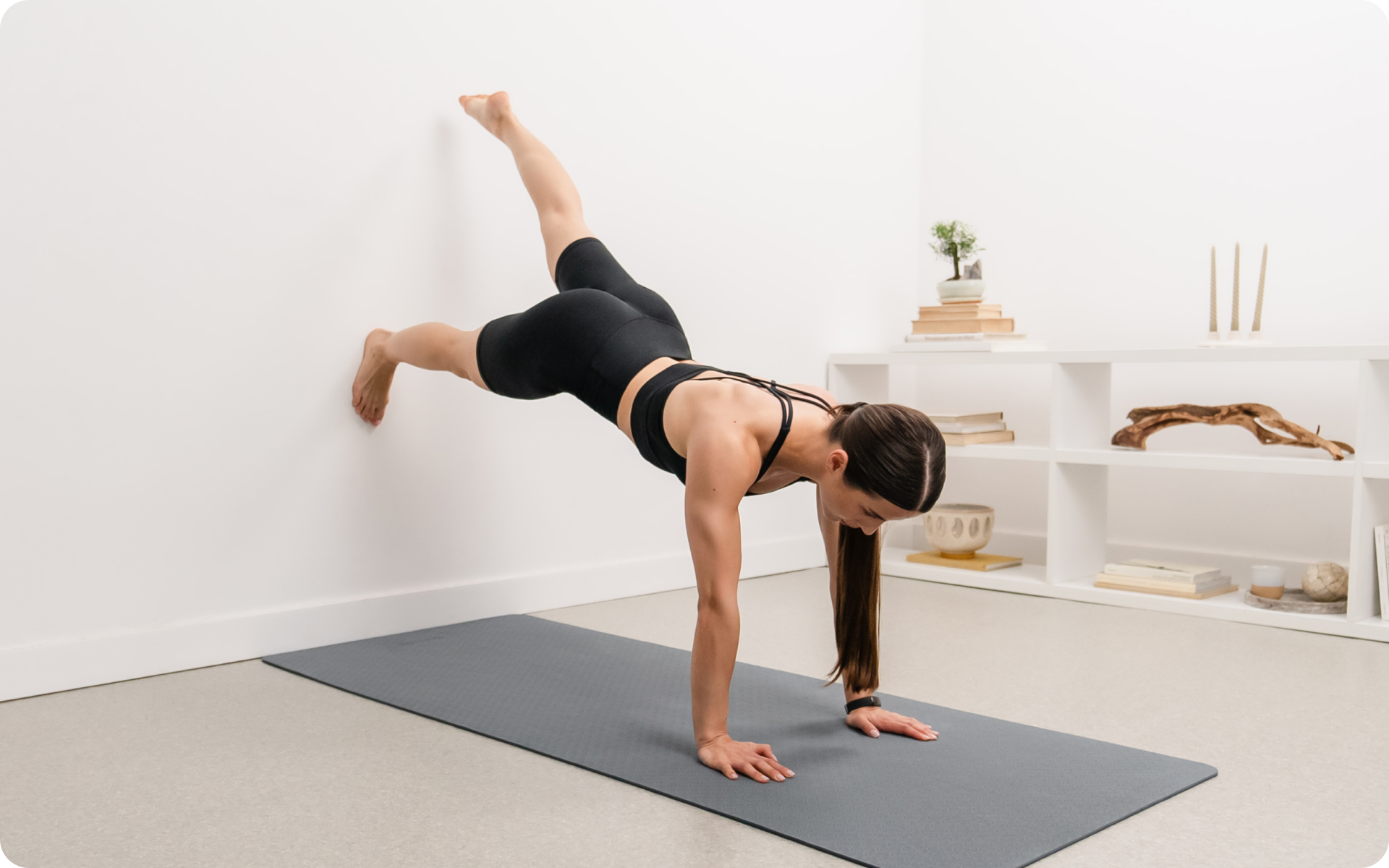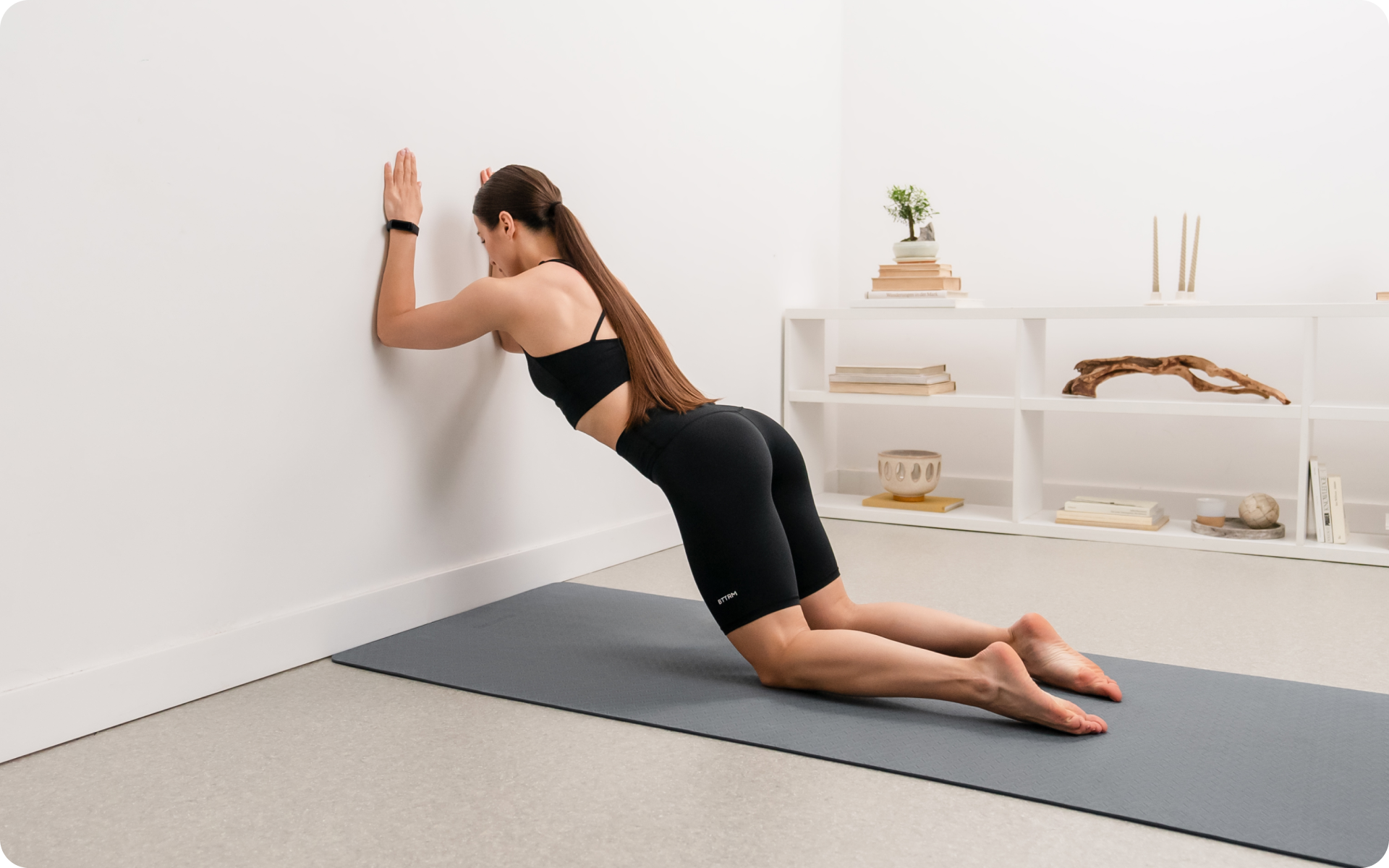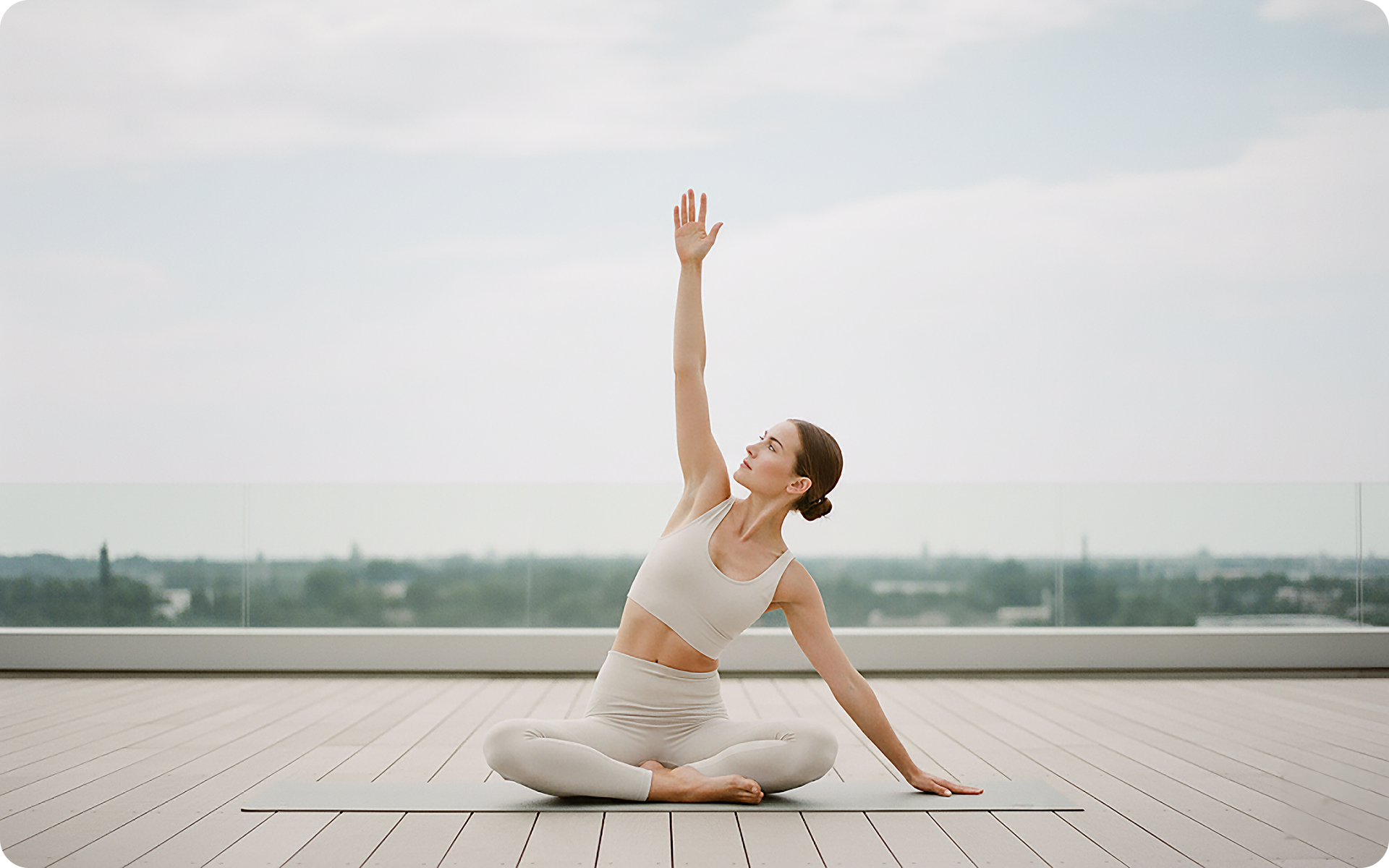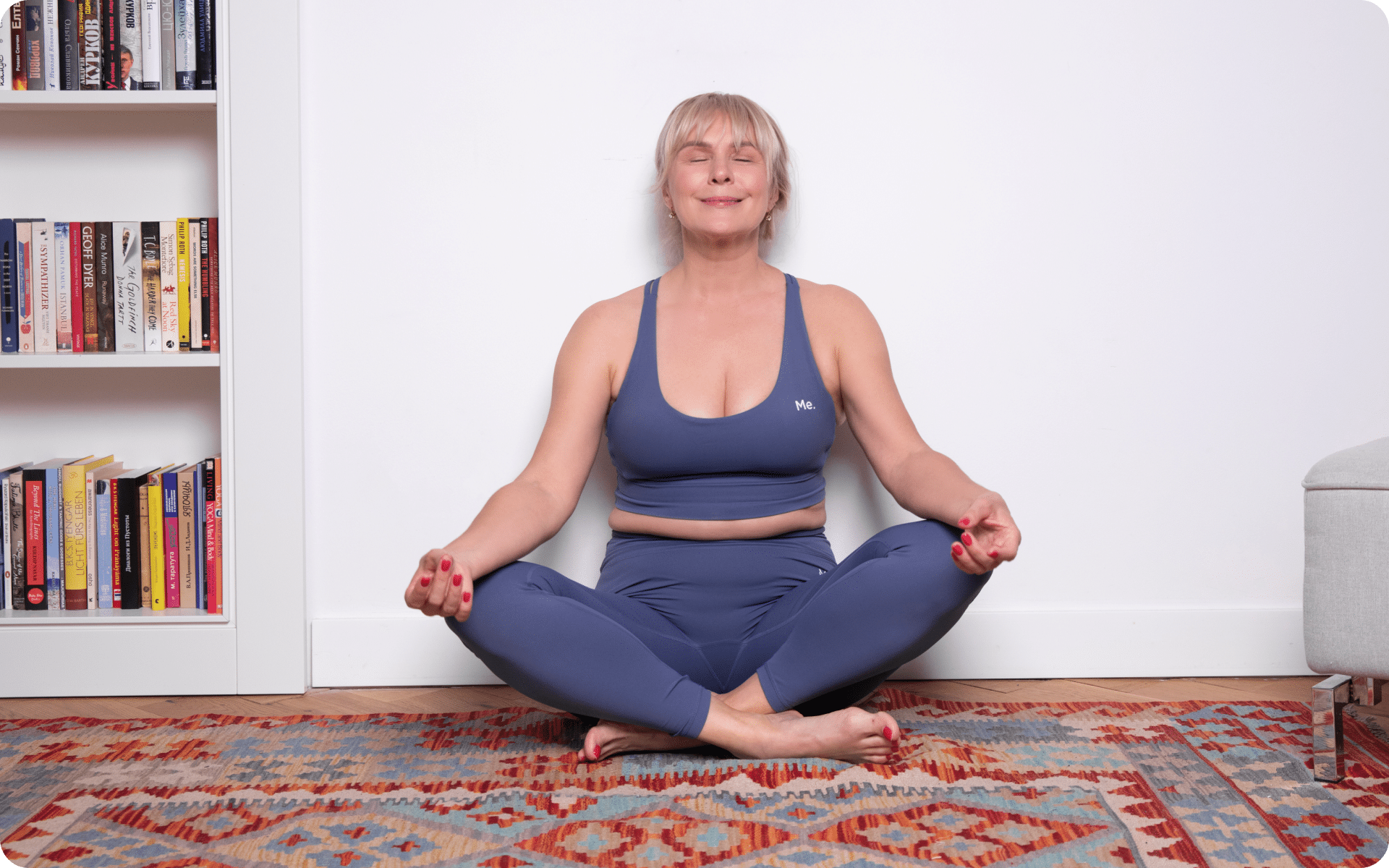Imagine a workout that combines the core-strengthening benefits of Pilates with the support and versatility of a wall, taking your fitness routine to new heights. Wall Pilates, an innovative fusion of these two elements, has been gaining traction among fitness enthusiasts and experts alike for its astounding effectiveness in sculpting the body and improving posture. In this article, we’ll delve into the methods behind Wall Pilates, uncovering the secrets that make it such a powerful tool in reshaping your body and revitalizing your workouts.
How Is Wall Pilates Different From Other Forms Of Pilates?
Wall Pilates differs from other forms of Pilates in several key aspects, which contribute to its unique benefits and challenges:
Use Of The Wall
The most obvious difference between Wall Pilates and other forms of Pilates is the use of the wall as a support and resistance tool.
This additional element allows for a wide range of exercises and modifications, making Wall Pilates more versatile and adaptable to different fitness levels.
Increased Resistance And Intensity
The wall adds an extra layer of resistance to the exercises, making them more challenging for the muscles. This increased resistance can result in a higher intensity workout compared to traditional mat-based Pilates, which can promote greater strength gains and calorie burn.
Improved Alignment And Posture
The wall acts as a guide for maintaining proper alignment and posture during the exercises. This focus on correct form helps to minimize the risk of injury and ensures that you’re engaging the right muscle groups, promoting better overall posture and body awareness.
Greater Balance And Stability
The wall provides support during balance exercises, making it easier to maintain stability while performing movements that might be challenging on a mat or other Pilates equipment.
This added stability allows you to focus on engaging your core muscles and improving overall balance.
Variety Of Exercises
Wall Pilates offers a diverse range of exercises, incorporating elements from traditional mat Pilates, reformer Pilates, and even yoga. This variety keeps the workouts fresh and engaging, reducing the likelihood of boredom and promoting long-term adherence to the practice.
Read More: Wall Pilates Equipment: Everything You Need To Know
Accessibility
Wall Pilates can be practiced in various settings, such as at home, in a gym, or at a specialized studio. All you need is a sturdy wall and a mat, making it an accessible option for those who may not have access to expensive Pilates equipment.
Why Is Wall Pilates So Hard?
Wall Pilates can be challenging for several reasons, which contribute to its effectiveness as a workout method:
Increased Resistance
The wall can add an extra element of resistance to the exercises, which can further increase the physical demand placed on your muscles. This additional resistance requires greater effort and engagement from your muscles, making the exercises more challenging compared to traditional mat-based Pilates.
Higher Intensity
Wall Pilates often involves a combination of strength, flexibility, and balance exercises, which require increased focus and muscle activation. This higher intensity can make the workout more challenging than other forms of exercise.
Emphasis On Proper Form And Alignment
Wall Pilates places a strong emphasis on maintaining correct form and alignment throughout each exercise.
Ensuring you’re engaging the right muscle groups and performing the movements correctly can be difficult, particularly for beginners or those with limited body awareness.
Core Engagement
Like traditional Pilates, Wall Pilates relies heavily on activating and strengthening the core muscles. For many people, engaging the core effectively can be a challenge, especially while maintaining proper alignment and performing complex movements.
Learning Curve
As with any new exercise routine, there is a learning curve involved in mastering Wall Pilates. It may take some time to become familiar with the exercises, understand how to use the wall for support and resistance, and develop the necessary strength and flexibility.
Individual Fitness Level
The difficulty of Wall Pilates can also depend on your current fitness level. If you are new to exercise or have a lower level of fitness, you may find Wall Pilates more challenging initially.
However, as your strength, flexibility, and body awareness improve, you’ll likely find the exercises become more manageable.
Despite the challenges, Wall Pilates offers numerous benefits and can be adapted to suit different fitness levels and goals.
Over time, with consistent practice and proper guidance, you will likely find that the exercises will flow smoothly, and you’ll continue to reap the rewards of this effective workout method.
If you struggle to even flirt with the idea of giving up your favorite foods or working out till your legs give way – BetterMe app is here to breathe a fresh perspective into the way you view the weight loss process! Check out the app and experience the fun side of fitness and dieting with BetterMe!
Is Wall Pilates Effective?
Yes, Wall Pilates is indeed effective. Here are some reasons why this innovative workout method has gained popularity and proven to be beneficial for practitioners:
Improved Posture And Alignment
Wall Pilates emphasizes maintaining proper alignment throughout the exercises, which can help in correcting potential posture imbalances.
The wall acts as a guide, ensuring that your spine, shoulders, and hips stay aligned while you engage your core muscles. This can translate to improved posture and reduced risk of injury in daily activities.
Increased Core Strength
Like traditional Pilates, Wall Pilates focuses on building core strength by engaging the deep stabilizing muscles of the abdomen, back, and pelvis (2).
The wall offers additional resistance and support, allowing you to perform more challenging exercises that can further strengthen and define the core muscles.
Enhanced Balance And Stability
The wall provides a stable surface to lean on, making it easier to maintain balance during the exercises. This allows you to focus on engaging the right muscle groups without worrying about losing your balance.
Over time, practicing Wall Pilates can improve your overall balance and stability, both in and out of the studio.
Greater Flexibility
Wall Pilates incorporates stretching and lengthening movements that help increase flexibility in the muscles and joints.
The wall serves as a support system, allowing you to safely deepen your stretches and access a wider range of motion. Increased flexibility can lead to improved mobility and reduced risk of injury.
Higher Calorie Burn
The added resistance provided by the wall challenges your muscles to work harder during each exercise. This increased intensity can result in a higher calorie burn compared to mat-based Pilates, making Wall Pilates an effective option for those looking to lose weight or maintain a healthy weight.
In addition to the benefits mentioned earlier, Wall Pilates offers several other advantages that contribute to its effectiveness, including:
Better Pain Management
Wall Pilates can help alleviate pain, particularly in the lower back, neck, and shoulders, by improving posture, enhancing movement, and strengthening the muscles surrounding these areas (1).
The wall support enables you to maintain proper alignment and engage the correct muscle groups, reducing potential strain on the joints and alleviating discomfort.
Better Cognitive Functioning
Like other forms of exercise, Wall Pilates can stimulate the release of endorphins, which can boost cognitive function and improve mental clarity (11). Additionally, the focus on breath control and mind-body awareness during the practice helps to reduce stress and enhance concentration (10).
Read More: Here Is How Pilates Wall Units Can Improve Your Workouts
Improved Athletic Performance
Athletes can benefit from Wall Pilates as it helps improve functional strength, balance, and flexibility, all of which are crucial for optimal performance in various sports (12).
The enhanced core strength and stability gained through Wall Pilates can lead to better power transfer, increased agility, and reduced risk of injury (4).
Bone Health
Weight-bearing exercises, such as those performed in Wall Pilates, can help increase bone density and slow down the loss of bone mass that occurs with age. This contributes to overall bone health and can reduce health risks (3).
Mood Boost
Engaging in Wall Pilates can elevate your mood by releasing endorphins, the body’s natural feel-good chemicals (5).
The combination of mindful movement, breath control, and physical exertion can help relieve stress, anxiety, and negative emotions, leaving you feeling more energized and positive after each session.
Versatility And Adaptability
Wall Pilates offers a wide range of exercises that can be modified to suit different fitness levels and goals.
The wall can be used to provide extra support for beginners or to add challenge and intensity for more advanced practitioners. This adaptability makes Wall Pilates an effective workout choice for people of all ages and abilities.
Why Is Wall Pilates Good For Weight Loss?
Wall Pilates can be an effective workout method for weight loss due to the following reasons:
Higher Intensity
The use of the wall can add an extra layer of resistance to the exercises, making them more challenging and demanding on your muscles.
This increased resistance results in a higher intensity workout compared to traditional mat-based Pilates, leading to greater calorie burn during the session.
Increased Muscle Mass
Wall Pilates exercises focus on building strength and lean muscle mass. As your muscle mass increases, so does your resting metabolic rate (8). This means that your body burns more calories at rest, which can contribute to weight loss over time.
Whether you’re a workout beast or just a beginner making your first foray into the world of fitness and dieting – BetterMe has a lot to offer to both newbies and experts! Install the app and experience the versatility first-hand!
Full-Body Workout
Wall Pilates offers a comprehensive workout that targets multiple muscle groups, including the core, upper body, and lower body. By working the entire body, you’re likely to burn more calories during each session, which can help create the calorie deficit necessary for weight loss.
Improved Metabolism
Regular exercise, like Wall Pilates, can help boost your metabolism, enabling your body to burn calories more efficiently (9). A higher metabolism can assist in weight loss by increasing the number of calories your body burns throughout the day.
Reduced Stress
Wall Pilates encourages mindful movement and breath control, which can help reduce stress levels. Lower stress levels can positively influence weight loss, as stress has been linked to weight gain and unhealthy eating habits (7).
While Wall Pilates can be an effective component of a weight loss plan, it’s important to remember that a balanced diet and a combination of both cardiovascular and strength training exercises are also crucial for achieving and maintaining a healthy weight (6).
What Are The Most Effective Wall Pilates Moves?
Here are some of the most effective Wall Pilates movements that target various muscle groups and provide a well-rounded workout:
Wall Roll Down
This exercise helps to stretch the spine, engage the core muscles, and improve posture.
To do it:
- Stand with your back against the wall, feet hip-width apart.
- Slowly roll down, vertebra by vertebra, until your hands touch the floor or as far as your flexibility allows.
- Roll back up to the starting position, maintaining contact with the wall throughout the movement.
Wall Push-Up
A great upper body exercise that targets the chest, shoulders, and triceps.
To do it:
- Stand facing the wall, with your hands placed slightly wider than shoulder-width apart.
- Bend your elbows and lower your chest towards the wall, keeping your body in a straight line.
- Push back to the starting position, fully extending your arms.
Wall Plank
This exercise engages the entire core and helps to build endurance.
To do it:
- Place your forearms on the wall, elbows directly below your shoulders, and step your feet back into a plank position.
- Keep your body in a straight line from head to heels, engaging your core muscles.
- Hold for 30 seconds to 1 minute, or as long as you can maintain proper form.
Wall Squat
This lower body exercise targets the quadriceps, hamstrings, and glutes.
To do it
- Stand with your back against the wall, feet hip-width apart and slightly in front of your hips.
- Slide down the wall, bending your knees until they reach a 90-degree angle, keeping your back pressed against the wall.
- Hold for 10-30 seconds, then slide back up to the starting position.
Leg Circles
This move works the inner and outer thighs, hips, and core muscles.
To do it:
- Stand sideways next to the wall, with one hand on the wall for support.
- Lift the leg closest to the wall to hip height, keeping it straight.
- Draw small circles with your leg, first clockwise, then counterclockwise.
- Repeat on the other side.
Wall Bridge
This exercise strengthens the glutes, hamstrings, and lower back.
To do it:
- Lie on your back with your legs bent and feet flat on the floor, hip-width apart.
- Place your feet close to the wall so that your knees are directly above your ankles.
- Press into your feet and lift your hips towards the ceiling, squeezing your glutes at the top. Lower your hips back down and repeat.
Single-Leg Wall Squat
An advanced variation of the Wall Squat that targets one leg at a time, increasing the challenge and intensity.
To do it:
- Stand with your back against the wall and assume the squat position as described earlier.
- Extend one leg out in front of you, keeping it parallel to the floor.
- Hold for 10-30 seconds, then switch legs.
Wall Mountain Climbers
This dynamic move engages the core muscles while providing a cardiovascular challenge.
To do it:
- Start in a plank position with your hands on the floor and feet on the wall.
- Keeping your core engaged, bring one knee towards your chest, then return it to the wall.
- Quickly alternate legs, maintaining a strong plank position throughout the movement.
Wall Scissor
This exercise strengthens the inner and outer thighs, as well as the core muscles.
To do it:
- Lie on your side with your back against the wall and legs extended.
- Lift your top leg up towards the ceiling, keeping it straight, then lower it back down, crossing it over your bottom leg.
- Repeat for the desired number of repetitions, then switch sides.
Standing Wall Crunch
A standing variation of the traditional abdominal crunch that targets the rectus abdominis.
To do it:
- Stand with your back against the wall and place your hands behind your head.
- Engage your core and lift one knee towards your chest while simultaneously bringing your opposite elbow towards the lifted knee.
- Lower your leg and arm back to the starting position and repeat on the other side, alternating sides for the desired number of repetitions.
The Bottom Line
Wall Pilates is an effective and versatile workout method that combines the core-strengthening benefits of traditional Pilates with the support and resistance of a wall.
This innovative fusion offers numerous advantages, including improved posture, increased core strength, enhanced balance and stability, greater flexibility, higher calorie burn, and various other health benefits.
DISCLAIMER:
This article is intended for general informational purposes only and does not serve to address individual circumstances. It is not a substitute for professional advice or help and should not be relied on for making any kind of decision-making. Any action taken as a direct or indirect result of the information in this article is entirely at your own risk and is your sole responsibility.
BetterMe, its content staff, and its medical advisors accept no responsibility for inaccuracies, errors, misstatements, inconsistencies, or omissions and specifically disclaim any liability, loss or risk, personal, professional or otherwise, which may be incurred as a consequence, directly or indirectly, of the use and/or application of any content.
You should always seek the advice of your physician or other qualified health provider with any questions you may have regarding a medical condition or your specific situation. Never disregard professional medical advice or delay seeking it because of BetterMe content. If you suspect or think you may have a medical emergency, call your doctor.
SOURCES:
- Application of Pilates-based exercises in the treatment of chronic non-specific low back pain: state of the art (2019, ncbi.nlm.nih.gov)
- Core muscle activation during Pilates exercises on the Wunda chair (2021, sciencedirect.com)
- Effectiveness of Pilates and Yoga to improve bone density in adult women: A systematic review and meta-analysis (2021, journals.plos.org)
- Effects of Core Training on Sport-Specific Performance of Athletes: A Meta-Analysis of Randomized Controlled Trials (2023, mdpi.com)
- Happiness & Health: The Biological Factors- Systematic Review Article (2014, ncbi.nlm.nih.gov)
- Healthy strategies for successful weight loss and weight maintenance: a systematic review (2014, pubmed.ncbi.nlm.nih.gov)
- Impact of a stress management program on weight loss, mental health and lifestyle in adults with obesity: a randomized controlled trial (2018, ncbi.nlm.nih.gov)
- Increasing muscle mass to improve metabolism (2013, ncbi.nlm.nih.gov)
- Metabolic Effects of Exercise (2016, pubmed.ncbi.nlm.nih.gov)
- Pilates and Mindfulness: A Qualitative Study (2012, researchgate.net)
- Roles of β-Endorphin in Stress, Behavior, Neuroinflammation, and Brain Energy Metabolism (2021, mdpi.com)
- Pilates: how does it work and who needs it? (2011, ncbi.nlm.nih.gov)
